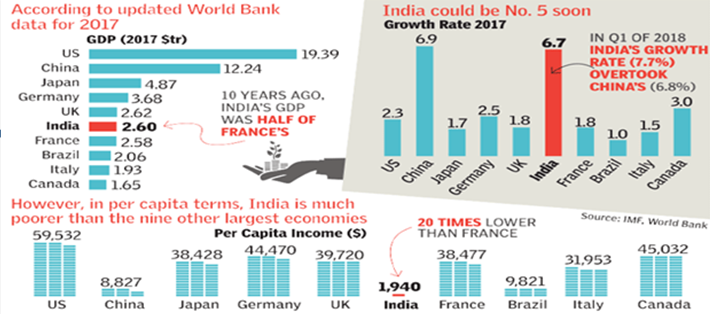Contents:


If there is evidence that it cannot be converted into cash quickly, then it can be excluded from the calculation of quick ratio. A current ratio of 1.0 would indicate that the book value of current assets is equal to the book value of current liabilities. A current ratio of less than one indicates that current liabilities outweigh current assets and that working capital is negative. Also, some companies present liabilities, profitability and other ratios in their annual and quarterly reports. You can refer to them to understand the current ratio of the concerned company.
Higher current ratio indicates under trading and overcapitalization. ● It is one of the most important metrics to gauge a company’s liquidity. The greater the ratio, the better the health of the company’s finances. Assets into cash to pay off its liabilities on a timely basis.
How to interpret the current ratio?
Introduction of Profit Before Tax When it comes to analyzing the financial health of a company, one of the most important metrics to consider is… Introduction of Public Deposits In the realm of corporate finance, companies constantly seek innovative ways to raise capital for their business operations and growth. Introduction of Profit Before Tax When it comes to analyzing the financial health of a company, one of the most… Using Tickertape Stock Screener, you can get the ‘Current Ratio’ of a company easily.
It is with the help of these techniques; the accounting ratios are derived from the financial statements. No need to issue cheques by investors while subscribing to IPO. Just write the bank account number and sign in the application form to authorise your bank to make payment in case of allotment. No worries for refund as the money remains in investor’s account.
Printing Technology & Its Significance in Construction Supply Chain Management
Each of these liquidity ratios is measured by dividing a company’s liquid assets by its current liabilities amount. The current ratio measures a company’s current assets against its current liabilities. Here’s everything to know more about current ratios, how to calculate them, and how they are useful in determining a company’s financial health. The quick ratio is a liquidity ratio that measures a company’s ability to meet its short-term obligations with its most liquid assets. It is calculated by dividing quick assets by current liabilities.
The current ratio is equal to ratio assesses a company’s ability to satisfy its current obligations, which are normally due within a year. It is ideal for companies to have a current ratio of more than 1. However, this ratio should be considered along with a set of other financial ratios and statements to fully assess a company’s standing.
Ardagh Metal Packaging S.A. (NYSE:AMBP) Receives Average … – MarketBeat
Ardagh Metal Packaging S.A. (NYSE:AMBP) Receives Average ….
Posted: Fri, 05 May 2023 09:28:43 GMT [source]
Create a list of all the assets and liabilities with their respective amount. ● Often, it does not consider the recurrence of sales, thus proving to be inaccurate in its function of gauging financial health. ● It helps analyze the working capital of the business more effectively.
By restructuring debt and short-term liabilities, companies can improve their current ratio. Let’s assume that the current assets of the company are represented by ‘3x’ and the current liabilities are represented by ‘x’. Now that you’ve understood both these ratios, you probably have the question ‘what is the difference between quick ratio and current ratio? A change in the method of inventory valuation also influences the ratio, which has nothing to do with the financial health or repayment capability of a firm.
Absolute Liquidity Ratio:
The author is a Certified Financial Planner with 5 years experience in Investment Advisory and Financial Planning. Her strength lies in simplifying complex financial concepts with real life stories and analogies. Her goal is to make common retail investors financially smart and independent. Companies selling non-durable goods have to write-off inventories due to poor frequency of sales or obsolete products.

We do not sell or rent your contact information to third parties. This ratio is relatively easy to manipulate; hence does not provide an accurate picture to investors or stockholders. Users must account for them in due advance, to make the most of this financial measure without being subject to its shortcomings.
NCERT solutions for CBSE and other state boards is a key requirement for students. Doubtnut helps with homework, doubts and solutions to all the questions. We should note from the previous examples that a transformer that “steps-up” voltage, “steps-down” the current proportionally. The current in the windings of a transformer is inversely proportional to the voltage in the windings. In the realm of business, companies take on various forms to suit their objectives and legal requirements. Current assets are assets that can be converted into cash or be utilized within 12 months.
It is calculated by dividing the company’s current assets by its current liabilities. A current ratio of 1 indicates that the company’s current assets are equal to its current liabilities. However, a very high current ratio can also have implications on a company’s financial health, which we will discuss in this blog post. By knowing the liquidity ratio one can determine the ability of the firm to pay off its short term debts and liabilities.
Not just that, there are over 200+ filters on the Stock Screener which can make your stock analysis quick and effective. It provides information on the short-term liquidity of a company. We collect, retain, and use your contact information for legitimate business purposes only, to contact you and to provide you information & latest updates regarding our products & services.
Liquidity ratios measure the ease at which a company meets its short-term financial obligations from its current assets. It helps the investors and creditors to understand the company’s liquidity position. It depicts how easily the company will be able to pay off its current liabilities through its current assets. A current ratio is a financial metric used to measure a company’s short-term liquidity.
Cash liquidity ratio
This business has a ratio of 1.7, which means that it can clear its loans almost 2 times with the help of its current assets. Ltd. from the data given in the following balance sheet for the year ending March 2022. The ratio provides a complete idea of the operating system of the concerned company. It depicts how efficiently and effectively the company sells its products and services to convert the inventories to cash. This ratio can help a company to improve its production system and to plan better inventory storage for avoiding any loss or managing any overhead expenses.
Often fails to gauge the financial health of a firm accurately as it does not account for the frequency of sales or obsolete produce. It factors in a firm’s inventory, which often exaggerates its liquidity out of proportion. This ratio is based on the quantitative aspect of current assets and does not weigh its qualitative aspect. When used single-handedly, this ratio does not prove efficient to measure the liquidity of a particular firm accurately. This ratio is also useful in determining a company’s operating cycle and its ability to generate sales.
Wells Fargo Maintains Mosaic (MOS) Equal-Weight Recommendation – Nasdaq
Wells Fargo Maintains Mosaic (MOS) Equal-Weight Recommendation.
Posted: Fri, 05 May 2023 13:32:00 GMT [source]
The current ratio definition implies that it is an indicator informing investors about the company’s ability to pay off any obligations that are due for one year. Current Ratio is a metric that tracks the financial health of a business. It allows the company and its shareholders to make important decisions about investing. It can also help a business measure its liquidity and maximize its assets to pay off debts. This article will help understand the types of current ratios along with suitable examples.
Jensen Investment Management Inc. Has $313.26 Million Position in … – MarketBeat
Jensen Investment Management Inc. Has $313.26 Million Position in ….
Posted: Fri, 05 May 2023 17:37:30 GMT [source]
A Current Ratio higher than industry standards is considered favourable, while one that is lower could indicate high risk. Now we come to our main topic of this post, i.e. liquid ratio or quick ratio. This implies that a company can meet its obligations nearly twice. This suggests that it can readily settle its short-term obligations or liabilities. Sometimes a company might change its inventory valuation, impacting the current ratio. A current ratio greater than the industry average is considered satisfactory.
Below is the break-up of the current assets of these four companies. The average current ratio for the 2/3 wheeler sector is 1.70. What do you look at before investing your hard-earned money in a stock?
- The current ratio is important because it provides insight into a company’s ability to meet its short-term obligations.
- Current ratio does not tell you which company is more profitable.
- There is a consistent increase in the current ratio of Dabur India Ltd and Marico Ltd.
- While the current ratio can be useful for evaluating a company’s financial health within its own industry, it may not be as useful for comparing companies across different industries.
A company can have higher ROE, but if it cannot pay its short-term debt then there is a high risk of default. In simple words, it illuminates how a business can maximize the liquidity of its current assets to settle debt and payables. The table below shows the calculation for a hypothetical company. This example of the current ratio will help gauge the health of the said company and can also help future investors make an informed decision.
Calculate the amount of current Assets and Current Liabilities. Please type the OTP you have received in your registered mobile no. When operated at 120 V in the primary of an iron core transformer, the current in the primary is 4 amps. Find the current in the secondary if the voltage is stepped up to 500 V. In an endeavor to foster economic development and social equality, governments and financial institutions worldwide have embraced the concept of priority sector lending.
